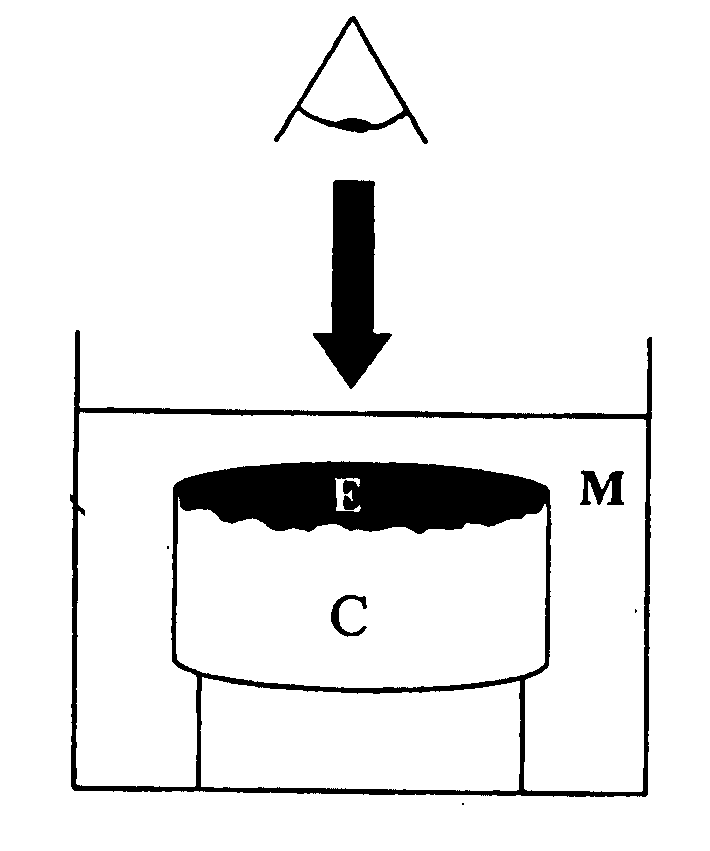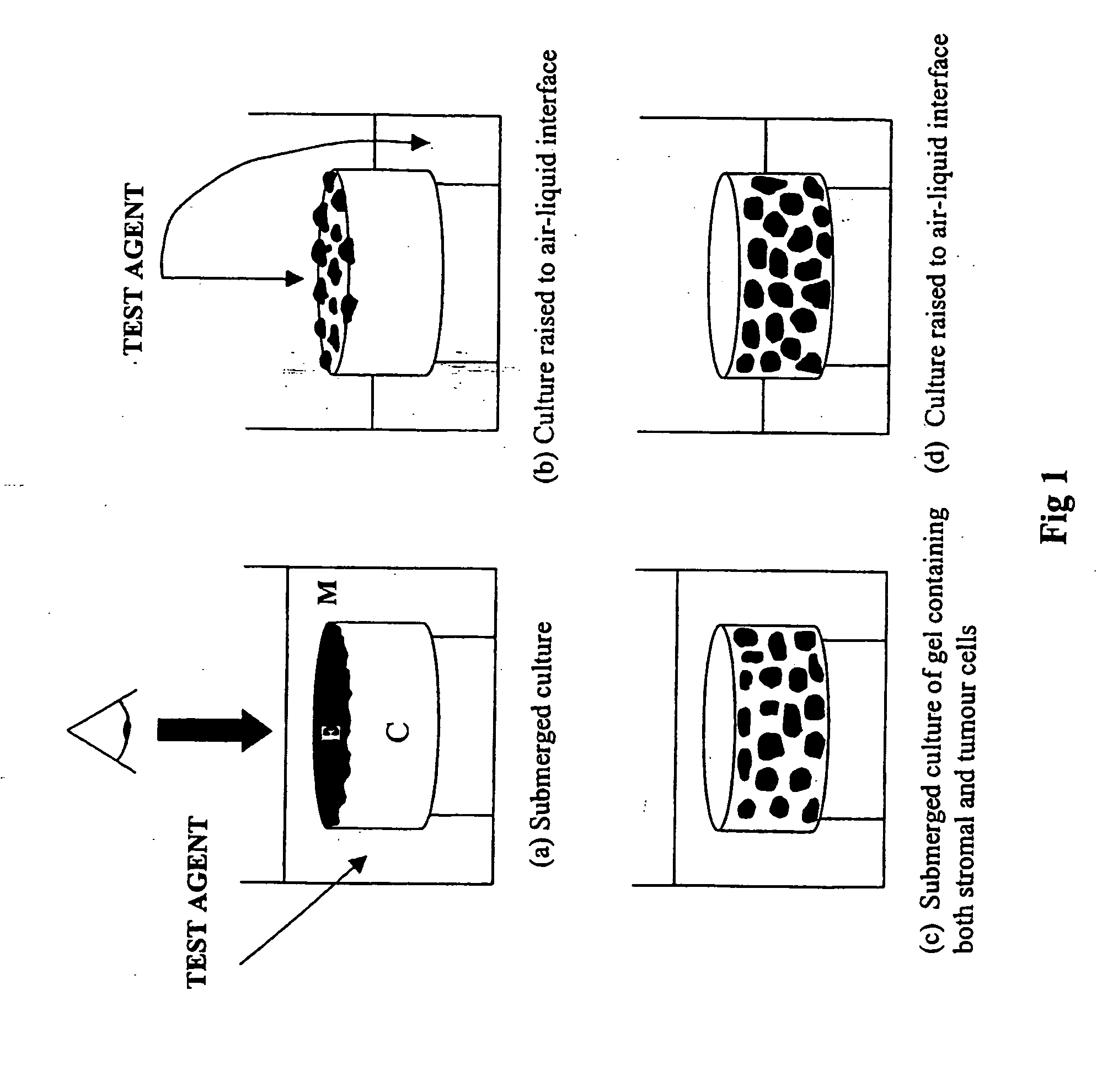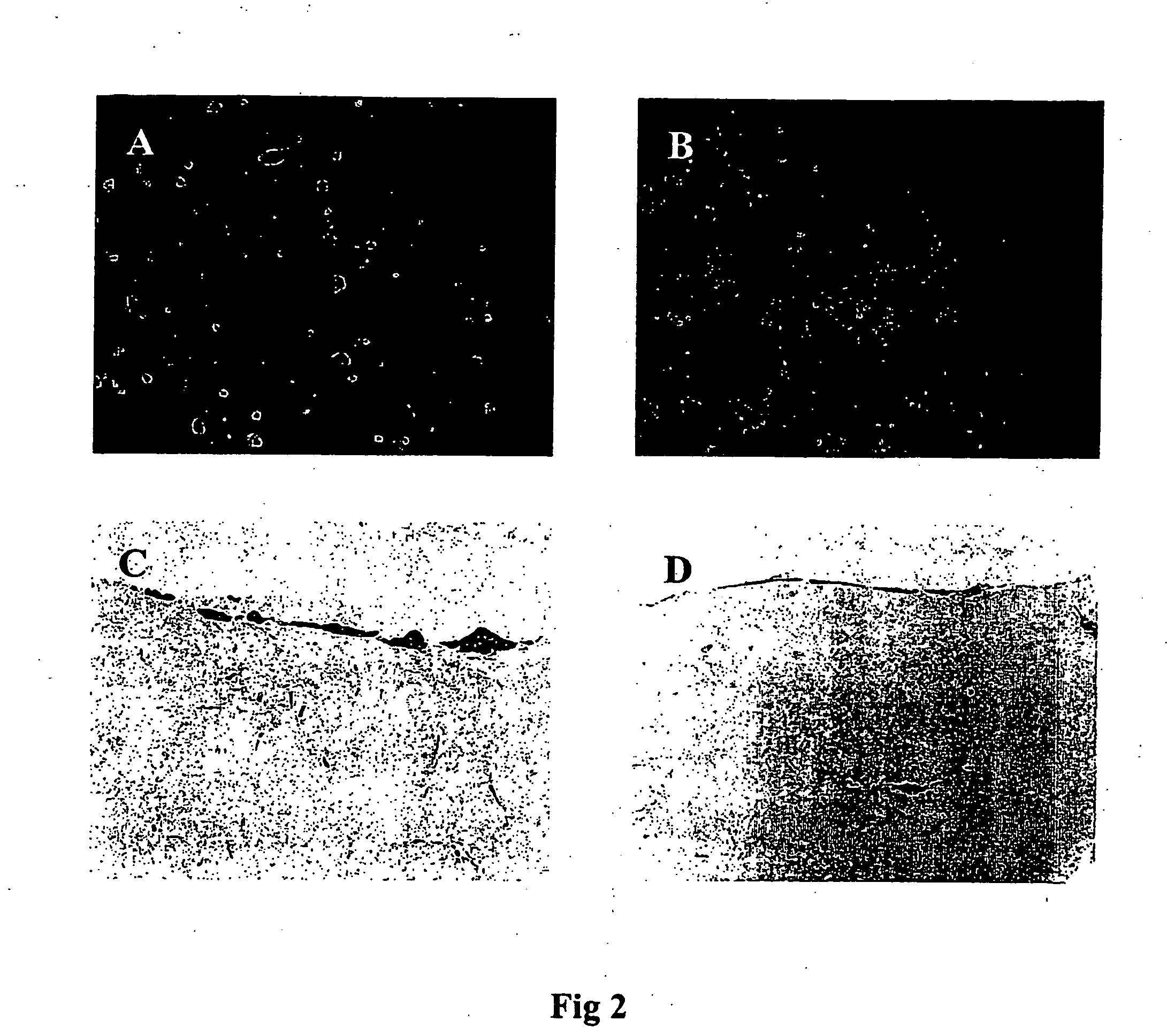Murine Living Tissue Model & UsesTthereof
- Summary
- Abstract
- Description
- Claims
- Application Information
AI Technical Summary
Benefits of technology
Problems solved by technology
Method used
Image
Examples
example 1
Preparation of the Living Tissue Model
[0052] In summary the in vitro models were developed using contracted collagen gels which supported a layer of mouse tumour cells or corresponding “normal” epithelial cells. The collagen gel was comprised of type I collagen, isolated from rat tail tendon, contracted using primary mouse fibroblasts, which were isolated from the dermis of newborn (or embryonic) mice. The collagen gels contracted to a size approximately 1.5 cm in diameter and were seeded with a single cell suspension of mouse tumour or normal epithelial cells. The models were initially maintained as submerged cultures, which allowed the cells to adhere to the collagen gel and grow. The models may thereafter be raised to the air-liquid interface (semi-submerged culture) to promote cell differentiation and formation of tissue. Benign tumour cells were observed to grow on the surface of the lattice and aggregate to form piles of cells equivalent to wart-like skin papillomas whereas, ...
example 2
Processing of Models and Data Interpretation
[0057] Cell models were harvested at appropriate time intervals and fixed overnight, at room temperature in a solution of buffered formalin. A small piece of the model was removed and embedded in paraffin wax. Sections were cut and mounted onto glass slides and stained with haematoxylin and eosin (H & E stain). The remainder of the model washed in PBS (phosphate buffered saline), permeabilised with Triton X-100 and stained with propidium iodide (PI). The washed models were stored thereafter in the dark at 4° C. and maintained their fluorescence for several weeks. Whole mounts of the PI stained models were analysed using fluorescent microscopy through coverslips applied directly to the surface of the tissue.
[0058] Propidium iodide staining of the whole mounts allows changes in the cell nuclei to be observed. Condensation and fragmentation of the cell nucleus, indicative of cell death by apoptosis can be clearly identified FIG. 8). Haemato...
example 3
Reproducibility and Viability of the Models
[0064] Reproducibility studies were performed using both BalbMK and SP-1 models grown over a time course and harvested as submerged cultures at day 3 and day 4 and raised to the air interface at day 3, 4, 5 and 6. Models were set up in quadruplicate. Four fields of view were photographed for each of the 48 different models and the area of growth measured in each one. Mean areas and standard errors were calculated for each group. Fields of view compared from within the same gel gave similar areas of growth. Measurements made of different models, which were cultured under the same conditions, gave comparable results. There were instances where areas measured were different from their replicates. This was due primarily to the presence of a large cluster of cells. Replicate models are routinely set up for all treatments studied and several fields of view are studied for each model to minimise errors introduced by natural variations and to act ...
PUM
 Login to View More
Login to View More Abstract
Description
Claims
Application Information
 Login to View More
Login to View More - R&D
- Intellectual Property
- Life Sciences
- Materials
- Tech Scout
- Unparalleled Data Quality
- Higher Quality Content
- 60% Fewer Hallucinations
Browse by: Latest US Patents, China's latest patents, Technical Efficacy Thesaurus, Application Domain, Technology Topic, Popular Technical Reports.
© 2025 PatSnap. All rights reserved.Legal|Privacy policy|Modern Slavery Act Transparency Statement|Sitemap|About US| Contact US: help@patsnap.com



